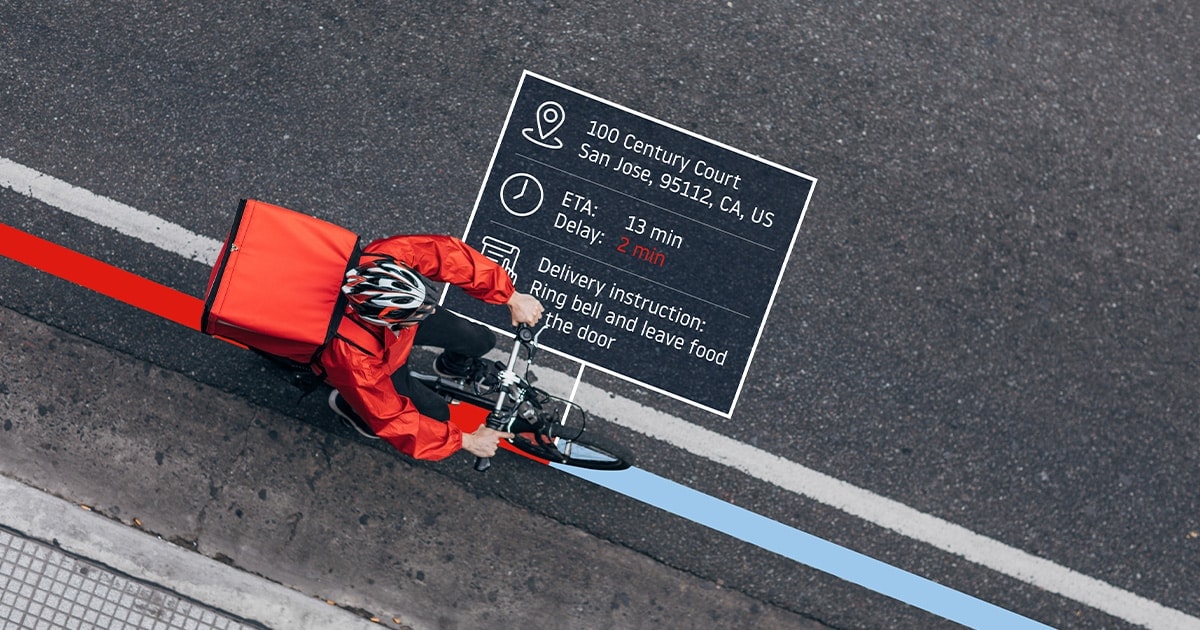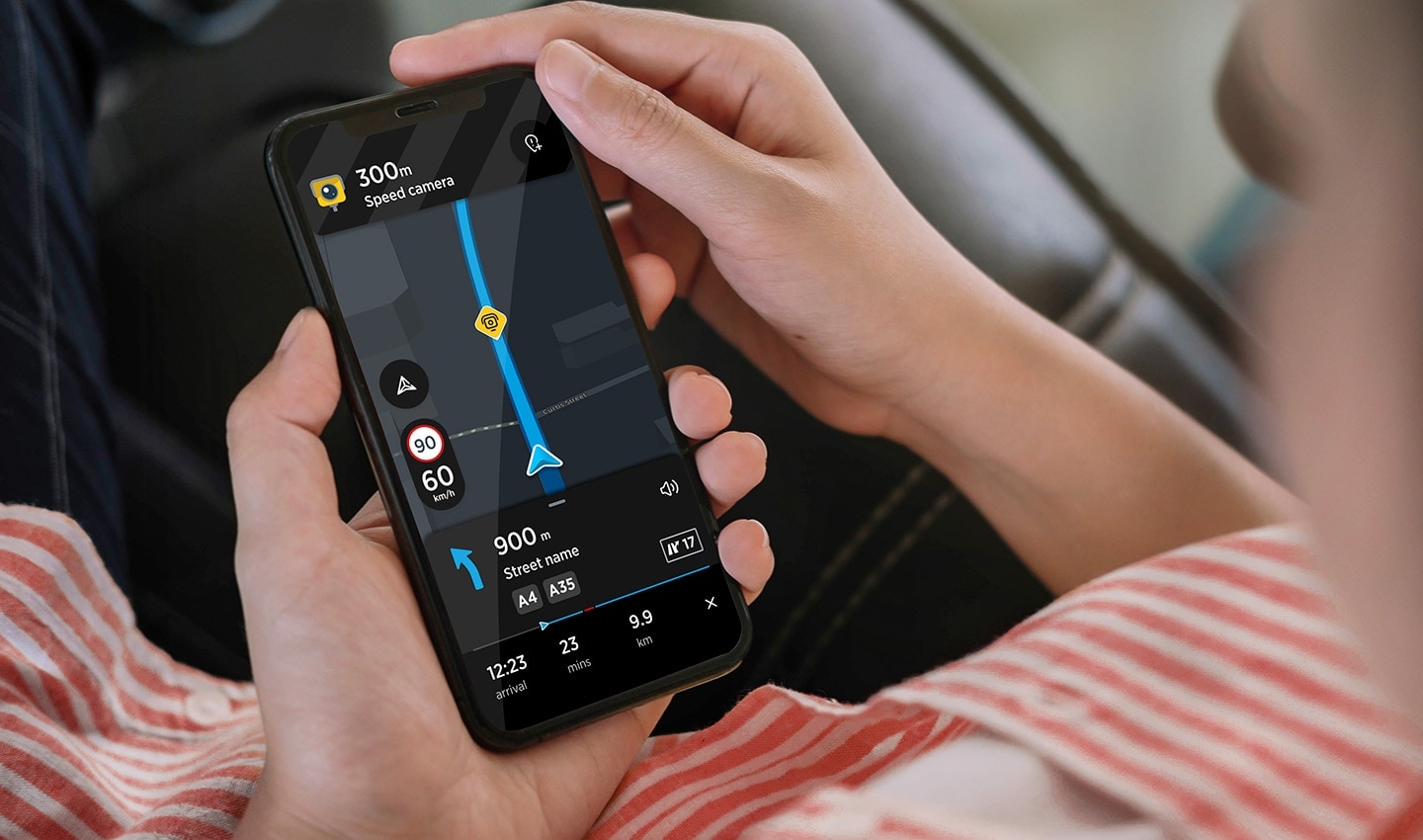
When you see the words TomTom and navigation in the same sentence, you’ll probably think of one thing: the portable navigation device (PND). But that device was just the beginning. The technologies that evolved from it are now being applied in even more exciting ways, bringing new possibilities to commerce, logistics and business.
Navigation: A journey toward collaboration
Over the course of history, as humans we’ve developed a variety of methods to understand where we are, where other things are and how to get to far off places. We developed cartography and navigational tools, like maps, sextants and compasses to measure our location and plot our onward course to ensure we reached our destination. But despite all the tools and resources, people still needed to be skilled navigators. They needed to be able to interpret compass readings and triangulate themselves in their surroundings. More importantly, they needed to have access to and be able to read maps. Eventually, though, maps were digitized and became far more accessible to the majority.
As time went on, more advanced technologies like GPS, satellite imagery and mobile mapping were developed. These put the building blocks in place to create the technologies necessary to help people navigate from A to B, and beyond.
Nowadays, planning routes and getting from where we are to where we want to go, is as easy as turning on our phone, using an app and following the instructions. Rarely do we think about what kind of software, data and information goes in to making these kinds of tools work. To say it’s taken for granted is an understatement.

Phones are now capable of satisfying many of our navigational needs.
Beyond individual navigation
While individual navigation has become accessible to the everyday user, the technologies that make it a reality are also part of the larger application ecosystem which move the world around us: creating new opportunities for commerce, services, businesses, on-demand deliveries, fleet management, ride-hailing and beyond.
For businesses that use location and navigation tools, the main goal of an application might no longer be about getting a single thing or person from A to B. A normal order to make trips would be to go from A-B-C-D. But things change and traffic is constantly changing. While traveling from A to B, it might become more efficient to go to D and then finish at what was originally destination C. Being this reactive has the power to save time, fuel and money.
Seeking further ways to optimize these trips creates a very important, all-around win: less fuel waste, faster pickup and drop-off, and a seamless experience for users on all ends of the application.
For delivery companies, being able to set multiple stops on a journey is important. For food delivery services, estimated times of arrival are crucial so that food is delivered hot and fresh. For fleet managers, optimizing driving routes for various vehicle types is crucial to support supply chains and to ensure driver safety, as well as helping them optimize their time on the road.
This digitization and transformation of mapping technology into more easily usable APIs, SDKs, and map data means that fleet managers can track and plan optimal routes for their vehicles, and delivery drivers can be provided with navigational instructions to complete that route – no specialist knowledge required. All this can happen dynamically and reactively.
It means that as consumers, we can hail a ride from wherever we are, to wherever we want to go with just a few button presses, and drivers can then easily find their way to us and then take us to our destination. This is a testament to how far location data has come: ride hailing applications pair drivers and customers in a manner of seconds, and users now are provided rapid updates on their ride progress.
The numbers behind routing engine operations show this, too: such algorithms serve 500k requests per second, 20B in 48 hours, and transmit hundreds of thousands of GPS points per second. Each of those requests represents some of those crucial updates between customers and drivers.
Thankfully, in a user's hands, these interactions are simple, but beneath the app are a series of interconnected location-based technologies that make it all possible. A task that once required many complicated systems, skills and resources to come together is now simplified thanks to collections of software development toolkits and developer resources, which allow for easier integration by engineering teams at companies large and small.
The next big destination for navigation
In today’s world of on-demand deliveries, ride hailing, last-mile logistics and shared mobility, navigation is playing a much greater role in keeping our world turning. Fine-tuning navigation to on-demand and logistics needs can make all the difference – such as locating dedicated taxi and rideshare lanes allows drivers to get to their destination even faster. Navigation goes beyond just getting us, as individuals, from where we are to where we want to go, it keeps the entire world moving and is an essential part of commerce. It’s also enabling a host of new startups and business ideas which previously would have been too logistically challenged to generate a return.
Over the years, each of these features required to navigate has been available separately in one form or another, but now many crucial mapping elements are accessible together. The accessibility and availability of these development tools today makes them more powerful than ever, and means that they enable refreshed, innovative leaps forward into the world of digital navigation.
People also read
)
How WowTruck maximizes efficiency of fleet tracking and delivery
)
Deconstructing traffic and the power of prediction for mobility and on-demand
)
The ETA conundrum
* Required field. By submitting your contact details to TomTom, you agree that we can contact you about marketing offers, newsletters, or to invite you to webinars and events. We could further personalize the content that you receive via cookies. You can unsubscribe at any time by the link included in our emails. Review our privacy policy. You can also browse our newsletter archive here.
)